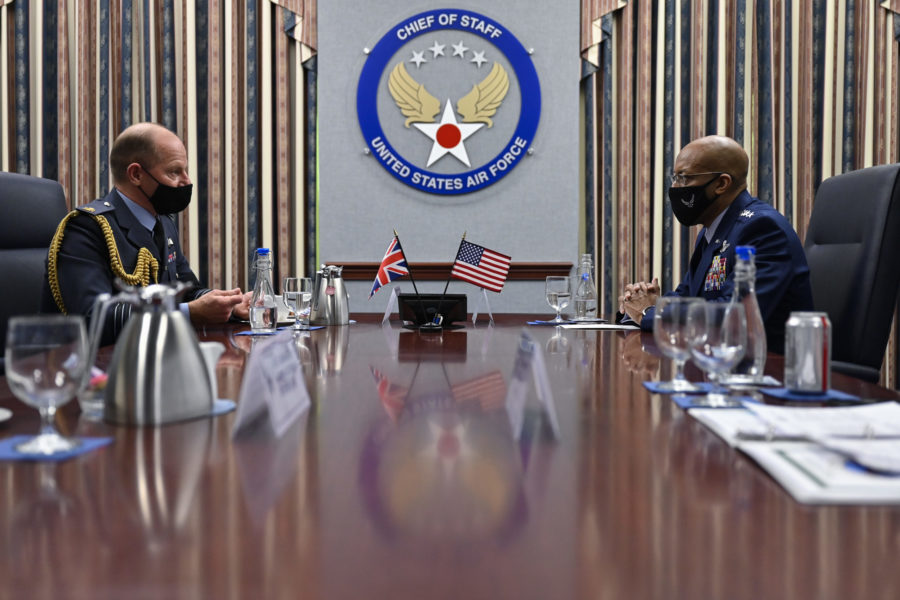The United Kingdom Royal Air Force is looking to make concrete progress over the next four years on its Future Combat Air System next-generation fighter jet and is reaching out for opportunities to test and compare its progress with the U.S. Air Force’s Next-Generation Air Dominance program.
The United Kingdom Ministry of Defense in March released its “Defence in a competitive age” document outlining its strategy for modernization and future competition, including a $2.4 billion investment over the next four years on FCAS. Royal Air Force boss Air Chief Marshal Sir Mike Wigston, speaking April 27 during a virtual Hudson Institute event, said this funding will go toward developing a demonstrator, with the “big decision” on design to follow.
The RAF’s goal is to have FCAS lined up in the late 2030s to be able to phase out the Eurofighter Typhoon fleet for air defense alert, with the RAF’s F-35s flying much of the rest of the mission set. FCAS will be both piloted and unpiloted, with “swarms” of drones to assist.
Because of this timeline, Wigston said he looks forward to working with USAF on comparing progress with the NGAD system, which already has a demonstrator that flew last year. Additionally, the RAF wants to work alongside and compete with the French and German next-generation fighter jet initiative.
“There’s an opportunity to feed off each other, to test each other,” Wigston said.
The Eurofighter Typhoon is the “backbone” of the United Kingdom’s air defenses, and with the fleet expected to fly through 2040, the schedule is starting to get tight. “Right now, I need to get going, working through what will replace the Typhoon in our quick reaction alert sheds,” he said. “The clock is ticking.”
The RAF is also working on its own version of USAF’s Advanced Battle Management System, which Wigston referred to as a “combat cloud” to fuse air and maritime sensors. The program has been in development in recent years, but Wigston said he has “grown tired of looking at PowerPoint slides with lightning bolt symbols joining up bits of kit” without any real-world progress.
“I want to see this fielded operationally in my time,” he said.
The RAF is planning a demonstration in 2022 in the North Atlantic using this new system in a scenario focused on tracking and targeting a submarine.
“That’s bringing to life the ability to move information, move data, and fuse information so that any operator, any platform in the battlespace, can pull on the information it needs, fuse it, … and be able to make better decisions than an adversary,” Wigston said.
For More with RAF Chief Wigston, listen to his conversation with retired Lt. Gen. David Deptula, Dean of AFA’s Mitchell Institute for Aerospace Studies, on the Aerospace Advantage podcast.
